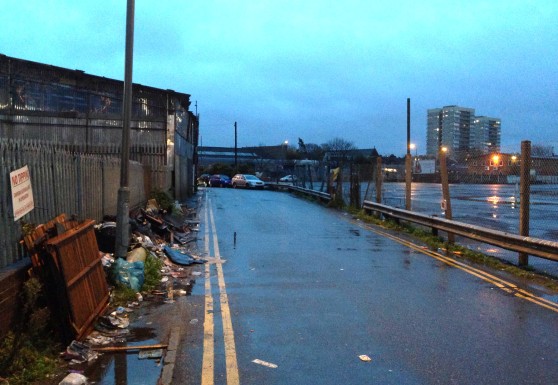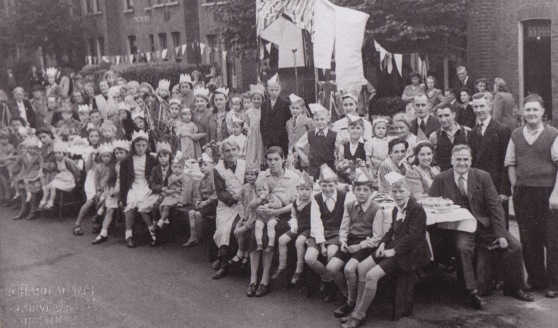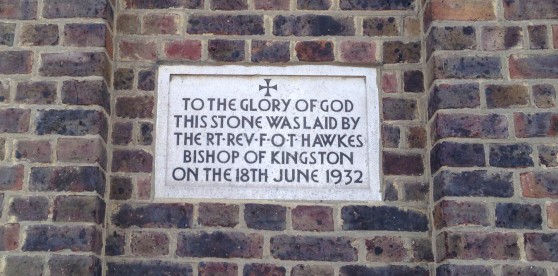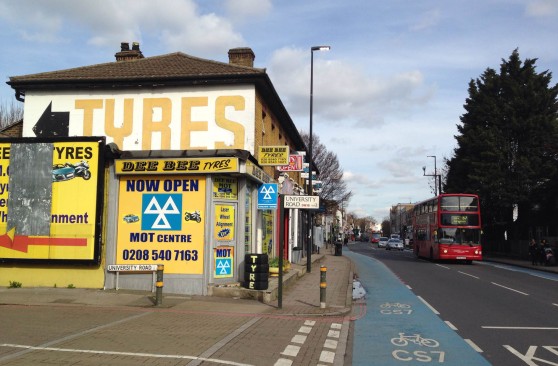

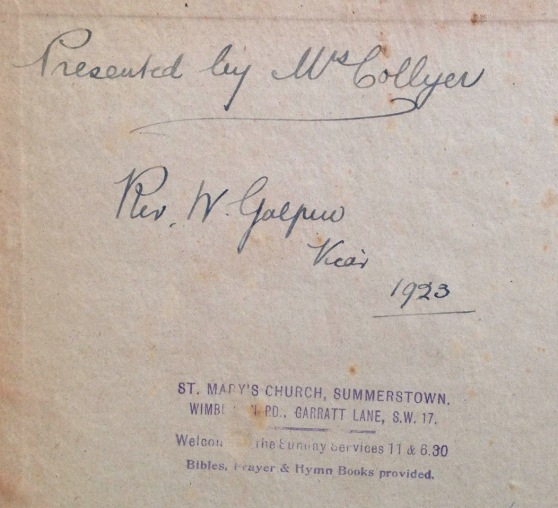
A number of the bound red collections of the St Mary’s parish magazine which have told us so much about the Summerstown182, have a dedication inked in fountain pen on the inside front cover. It says simply ‘Presented by Mrs Collyer, 1923. Rev W Galpin, Vicar’. Hard to know for sure, but did Mrs Collyer make some kind of offering to the church, perhaps paying towards this precious collection? It also makes me wonder if she must be the mother of the G W Collyer on the war memorial. Certainly George Collyer is a name than comes up with some frequency in the early years of the war. Very sadly the most detailed account is the one outlining his death, at a place called High Wood on 15th September 1916.


Charlotte Weaver married Robert Alfred Collyer in Wandsworth on 14th January 1888. In the 1901 census they were living at 4 Elton’s Cottages, Garratt Green. After Robert Sadler’s running track shut up shop, one of the first things built was the More Close Bleach and Dye Works. A Captain Frederick Eden Elton had four adjoining cottages built for the workers and modestly named them after himself. He lived nearby in a large property known as ‘The Chestnuts’ which was later the home of none other than Alice Creeke who ran The Anglo American Laundry. You can see the cottages on the above map, where the Bleach Factory has been replaced by an Electrical Components Works. At 2 Elton’s Cottages lived the family of another of the Summerstown182, Henry Briggs, who also died in 1916 at the Battle of Jutland. There were five Collyer children, George born in 1893 was the older boy, his brother Laurence Alfred being six years younger. His sisters were Gertrude, Dorothy and Alice. Robert worked as a painter and glazier and with houses popping up all around him in these early years of the century, he would not have been short of work. He may even have worked on the biggest building project in the area, the construction of the new St Mary’s Church. In 1911 the family were at 41 Headworth Road, a little further up Garratt Lane and one of the ‘lost streets of Earlsfield’ that disappeared after flood damage in 1968. This incredible photo from 1924 shows these streets, packed with little terrace houses. In the foreground you might just pick out a horse and plough working a field at the end of Headworth Road. George was sixteen years old and employed as a cutter, possibly at the cardboard box factory. Gertrude was an ironer, yet another laundry job no doubt. Dorothy, also sixteen and possibly George’s twin, had one of the best Summerstown jobs we’ve seen come up so far, she was employed as a chocolate packer. Almost thirty years later at the start of the Second World War, Charlotte was still at the same address. Gertrude had married a photographer’s printer called Thomas Prior and the couple were also living at 41 Headworth Road.


George must have been a territorial soldier before the war and served in the same 23rd Battalion, London Regiment as the three sunday school teachers, William Mace, James Crozier and Laurence Gibson. In the parish magazine of October 1914, Reverend John Robinson published for the first time his, roll of serving soldiers and sailors ‘a list of men serving their King and Country who have gone forth from this parish’. George William Collyer is one of them. Nothing more is heard of him until August 1915 when the vicar writes ‘we are glad to know that the following who have been reported wounded or sick, have recovered. Norman Lane, Lionel Catchpole, Alfred Dare, James Chenery, Bob Pinnell, George Collyer and Walter Thomas’. In October it was noted that Laurence Alfred Collyer had joined the Royal Field Artillery. At sixteen he was still three years too young for overseas service but he was far from the only ‘boy soldier’ to slip through the net. In March 1916 it would appear that notification was received of a promotion. ‘We also congratulate George Collyer of the 23rd London Regiment on receiving another stripe and now being Sergeant Collyer’.

That summer of course saw the start of the Somme offensive and before long news of the devastating casualties found its way onto the pages of the St Mary’s parish magazine. Reverend Robinson would not have wanted to cause panic or alarm, but as the bad news came ever faster, his sense of deflation and despair is evident in the tone of his words. In November he wrote ‘The Vicar has received a letter from one of the Church workers who was in Sergeant George Collyer’s platoon, referring to his death saying, ‘He led his platoon to a dump with ammunition, bombs etc and the enemy began to shell us while so doing. The platoon was dispersed, a few being wounded; but Collyer, with remarkable coolness, rallied his men and led them back to the trench they had left. A few minutes later a shell landed killing him and two others almost immediately… He was the best platoon sergeant I have ever known, and I feel sure that all those left in his platoon will feel his loss keenly’. In the next paragraph he refers to the death of Arthur Clarke from Franche Court Road ‘in the great battle of High Wood’. Both George Collyer and Arthur Clarke died on the sane day, 15th September 1916.

We visited the London Cemetery Extension at Longueval, the final stop on our trip to the Somme in October 2014. We had just seen George Kidd in Caterpillar Valley and it was getting dark and we were a bit weary and not particularly looking forward to a lengthy search. Amazingly, both the graves of George Collyer and Arthur Clarke are very close to the entrance of the cemetery. In fact Arthur is in the front row with George in the one behind him but about five or six graves along. It was quite a surprise to see these neighbours who lived in streets separated by Garratt Lane from each other, end up being buried so near to each other. Even more extraordinary was that both graves sprouted flowers in full bloom. Arthur, a pale yellow rose, George an unruly sprig of michaelmas daisies. It was a little explosion of colour on a drab and overcast day and no other graves had such decoration. A few months later, a group of relatives of Arthur Clarke came on a Summerstown Walk and I told this story outside his home at 45 Franche Court Road.

As for George’s younger brother, oddly enough Laurence Alfred Collyer pops up in the absent voters list at 41 Headworth Road in 1918. Not only had the lad pulled the wool over the authorities eyes and got way with being an underage soldier, but now he was in line to have a vote in the general election two years before he was actually entitled to it. Who could begrudge him that. The St Mary’s parish magazine of October 1944 reported on Charlotte Collyer’s death. ‘She died at the home of her daughter, Mrs Prior, 41 Headworth Road at the age of 85’. Mention was made of her life-long association with St Mary’s and her 41 year membership of the Fairlight Hall People’s Fellowship. ‘We extend our sincere sympathy to the bereaved family with a special thought and prayer for the prisoner-of-war son in Hong Kong’. Laurence would have been 45 then and its just possible that this was him. We are still working on whether he eventually made it home.






